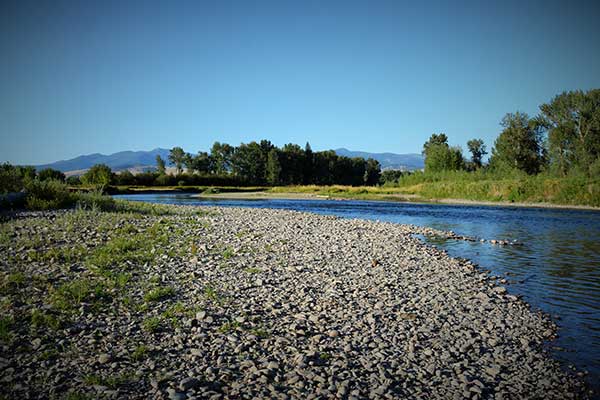
One hot, dog-day afternoon last week I loaded up my Labradors and fly rod and headed for the Bitterroot River. As it turned out, I didn’t do much fishing. The smoke was thick from the nearby Roaring Lion Fire near Hamilton (which had already burned 18 homes) and the water was more warm and shallow, with more algae clinging to rocks, than I ever recall from the past; no need to add further stress to trout that are, no doubt, doing all they can to conserve energy and make it through another Montana summer – summers that seem to be growing longer, hotter and dryer. When in a river, do as the fish do, I thought, and so I found a deep cool hole in the shade of some cottonwoods and soaked until a cool evening breeze arrived.
Like all long-time Montanans I recall many hot, dry summers and big fire years. It’s part of the place we love. But there’s no doubt such summers are growing more frequent. Higher overall temperatures, less snow pack, earlier snow melt, less water in our rivers. When river levels drop shallow waters grow warmer and have lower oxygen levels. Warm waters are also ideal for algae growth, which saps even more oxygen from rivers. Trout need cool water and oxygen.
Scientific consensus is conclusive; the verdict is in: Our climate is changing.
But climate change is only part of the story, exasperating other issues. More people are building homes in fire-prone, fire-adapted forests where natural, historical fire-regimes have been altered by past management and fire suppression. The low-elevation ponderosa pine forests of the Bitterroot Valley, for example, evolved with and depended on frequent, low-intensity fires that thinned out the Doug-fir and grand fir understories, recycled nutrients and maintained healthy savannas with plenty of grasses and forbs for elk, deer and other wildlife. High-grading of big fire-resistant pines; overgrazing of grasses that fueled small fires, and years of quickly extinguishing all fires eventually allowed for the growth of unnaturally thick fir-forests. With intense competition for limited water and nutrients, these weakened forests became more susceptible to insect and disease. Warmer winters have also allowed for higher reproduction and growth of mountain pine beetle populations.
Dead and dying forests combined with hotter, drier summers makes for the perfect storm, of sorts, for large, frequent, intense and damaging wildfires.
Daunting challenges for sure, but far from hopeless. Working together, we must push for policies that reduce C02 and other greenhouse gasses; create cleaner, more efficient ways of extracting and using energy, and develop alternative sources of energy. We must also support efforts to restore healthy forests, and protect, restore, enhance and reconnect critical habitat that will ensure wildlife have plenty of room to adapt to changes.
The key is working together. Collaboration. Compromise. We need to unite diverse interests, set aside our differences and fight together to protect what we all love and cherish – Montana’s wildlife and wildlife places and the hunting, fishing and other opportunities they provide.
Dave Stalling is Montana Wildlife Federation’s Western Field Rep. based in Missoula and can be reached at dstalling@mtwf.org

